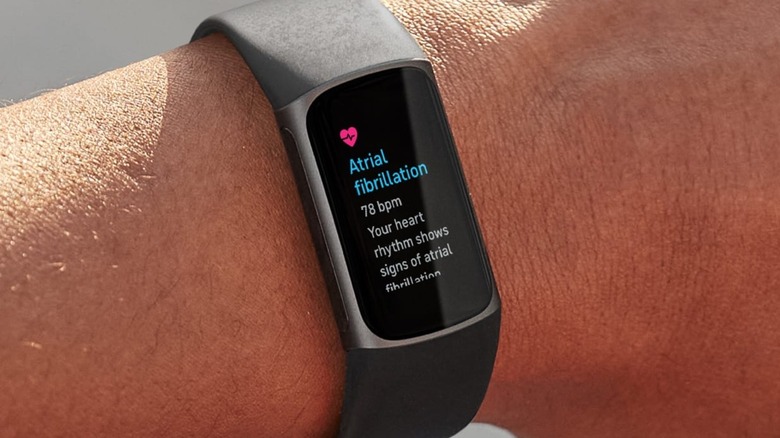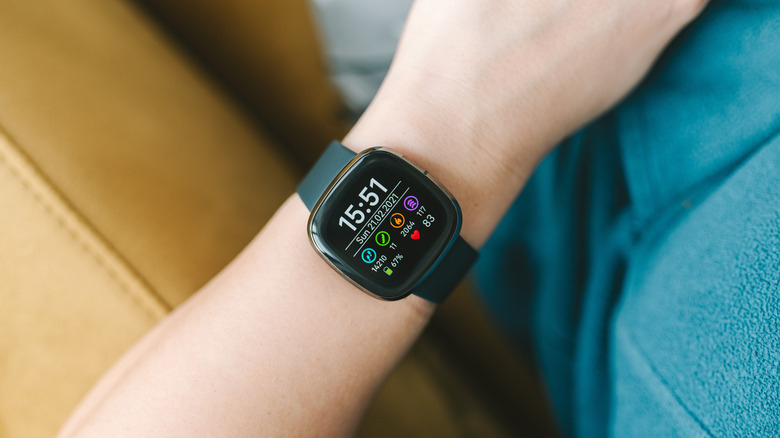Fitbit Gets FDA Greenlight To Passively Monitor Your Heart Rhythm
If you weren't already aware, Google acquired Fitbit back in November 2019 in a deal worth $2.1 billion. It signaled that Google was indeed serious about the wearables market despite having only made a wearable operating system, relying on brands like Samsung and LG to make the hardware to run said software. Although rumors have been circulating that Google will introduce a Pixel Watch to the public, said device has yet to materialize. Google further perpetuated the idea that they might never make their own smartwatch hardware by partnering with Samsung to merge Samsung's Tizen OS with Google's Wear OS and forge one ultimate wearable operating system. At the moment, Fitbit is the only Google-owned smartwatch hardware on the market, and no Fitbit devices currently run Google's full-powered smartwatch OS.
This, however, doesn't mean that Google and its subsidiary Fitbit have been standing still. Google's Fitbit team has announced it has received approval from the U.S. Food and Drug Administration to run a new PPG (photoplethysmography) algorithm on Fitbit devices. This will allow Fitbits to passively detect atrial fibrillation (AFib) in individuals who may suffer from the condition. The Fitbit team says that the algorithm will be built into the new Irregular Heart Rhythm Notifications feature on Fitbit devices and the companion Fitbit app.
Fitbits support both active and passive AFib detection
Fitbit's Sense and Charge 5 devices are already able to actively check for AFib using electrocardiogram (ECG or EKG) technology (in countries where they are approved to do so). Users place their fingers on their devices where electrodes actively measure the user's heart rhythm by detecting the electrical signals emitted from the heart every time it beats. An irregular heartbeat can indicate AFib, and the resulting electrocardiogram data can be reviewed by a doctor and further investigation can then be pursued if needed. Detection of AFib using active monitoring can only assess AFib during the period of monitoring, however.
The addition of passive algorithmic PPG monitoring for AFib adds a significant upgrade to Fitbit devices' current range of heart rhythm detection abilities. Equipped with a Fitbit PPG optical heart-rate sensor, Fitbit devices are able to assess heart rhythm in the background when a person is resting or asleep. According to the Fitbit team, the device's optical heart-rate sensor can measure the expansion and contraction of tiny blood vessels throughout the body as the heart pumps blood through the circulatory system. With continual monitoring of this sort, AFib symptoms and episodes which might otherwise go unnoticed are much more likely to be caught by Fitbit's new PPG algorithm. The company says that clinical testing has shown its new system to be 98 percent effective.
AFib affects millions of people worldwide
The condition known as AFib includes an irregular heartbeat that can be difficult to detect in sufferers. Some people present no symptoms at all, while others can present heart palpitations, shortness of breath, or sudden weakness. As the Mayo Clinic explains, AFib occurs when the upper heart chambers beat out of sync with the lower chambers. It can cause blood clots in the heart and even a stroke, making early detection and treatment vital to avoid more serious complications.
According to a study published by PubMed in 2014, AFib affected around 33.5-million people around the world as of 2010. According to the CDC, AFib was the underlying cause of death in at least 26,000 individuals in the United States in the year 2019.
With health tracking features among the leading reasons why people buy smartwatches and trackers, breakthroughs of this nature are key product differentiators for consumers looking for devices that monitor vital signs and other key indicators of health and wellbeing. Both the new PPG-based algorithm system and Irregular Heart Rhythm Notifications feature will soon be available on existing heart-rate enabled Fitbit devices in the United States. No word on when or whether the feature will reach users in other markets at this stage.

